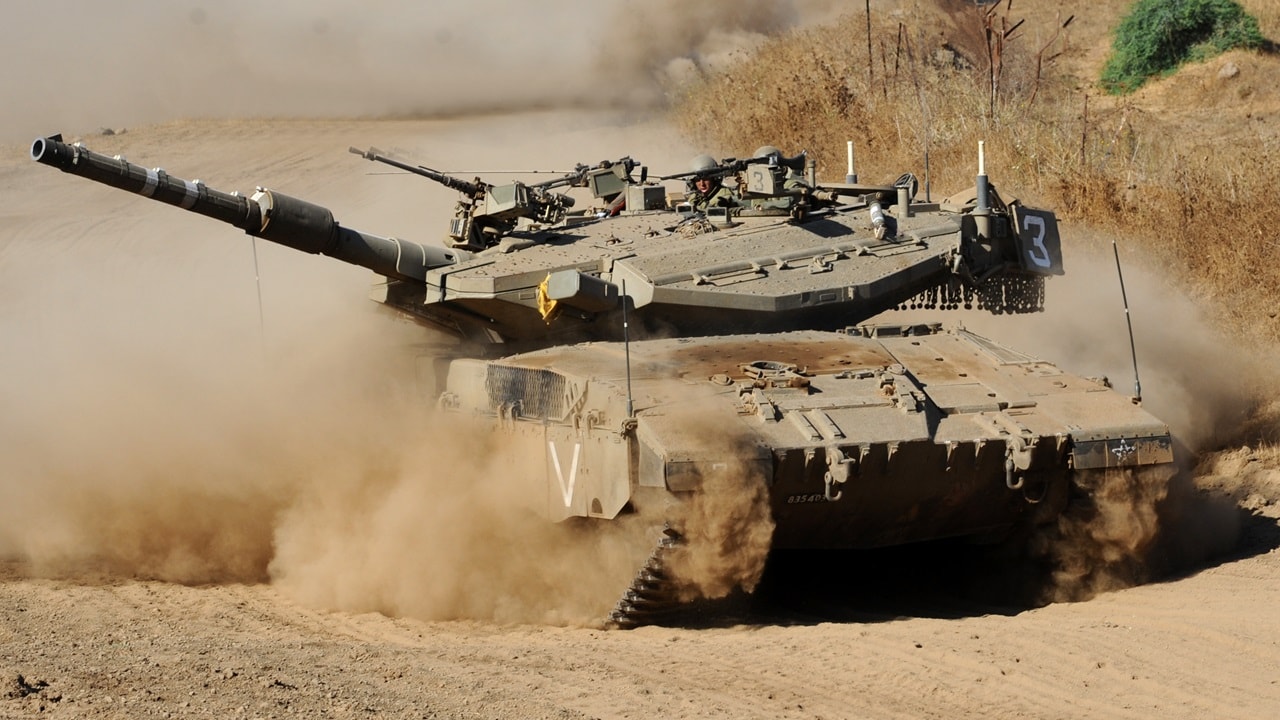Time is a precious commodity in Israel’s fight against Hamas terrorists. As Israel prepares to enter Hamas’s final stronghold, Rafah, the United States should ensure Israel has as much time as it needs to fully defeat Hamas.
Fighting terrorists who wear no uniform in urban terrain is complicated—as one of us learned during deployments to Iraq and Afghanistan, battlefields that, however terrible, were simpler than Gaza. Operating in such a complex environment takes time, particularly for a military as dedicated to protecting civilians as the IDF.
Since the last Israeli ground incursion into Gaza in 2014, Hamas has constructed a 300-mile-long network of interconnected tunnels underneath Gaza’s urban landscape to a depth of up to 200 meters. One senior Israeli official noted the density of the tunnel network is three times greater than anticipated. This vast subterranean hive enables terrorists to hide, fire, and retreat quickly in tactical maneuvers; serves as weapons depots, headquarters, and protection during Israeli airstrikes; and hides hostages within its depths, as confirmed by DNA testing within the tunnels.
Israeli troops need to move carefully through this obstructed maze of streets and alleys, navigating booby traps, snipers, and ambushes sprung from tunnels below their feet. They need to move more slowly still to minimize harm to civilians, especially because Hamas intentionally endangers those civilians.
To offset the IDF’s superior military capabilities, Hamas frequently uses civilian populations as “human shields” to magnify the collateral damage from Israeli airstrikes by placing their weapons stockpiles, launchpads, and headquarters in or under residential buildings, schools, mosques, and hospitals. Hamas’s strategy is to purposely put civilians at increased risk, then exploit graphic images of injured civilians to delegitimize IDF operations, reduce their effectiveness, and pressure Israel to end operations prematurely.
Israel deals with Hamas’ illegal use of human shields by adopting precautions that prolong its operations. Giving advance notice of their targets and areas of operations using air-dropped leaflets, telephone calls, and social media posts lets civilians get out of harm’s way but also allows terrorists to prepare or flee. So, too, do daily pauses to allow civilians—and potentially disguised terrorists—to evacuate along protected humanitarian corridors. Israel’s willingness to delay strikes until they confirm civilians have left the area, or in some cases call off strikes if too many civilians are present, mean that their mission to destroy Hamas will take even longer.
Israel is willing to accept these delays, for the safety of both its troops and Palestinian civilians, even as it remains committed to the ultimate goal of ensuring that Hamas can never again murder, rape, and kidnap Israeli civilians like it did on October 7.
Yet, ironically, the longer Israel’s operations take, the more international pressure grows to cut them short. Such demands, instead of protecting civilians, would leave both Israelis and Palestinians in greater danger.
Agreeing to a brief pause in fighting in return for the freeing of all hostages is understandable. However, agreeing to a ceasefire the keep Hamas intact and in power, as Israel has done in previous conflicts, would pose an unacceptable risk to Israeli and Palestinian civilians. A ceasefire with Hamas, struck after the 2021 war and repeatedly violated by Hamas, was already in place on October 7. It did nothing to stop Hamas from launching its heinous attack. There is no reason to think Hamas would not similarly violate any ceasefire reached now. Hamas glibly admits that it “must teach Israel a lesson, and we will do it twice and three times.”
Nor would pushing for a ceasefire that leaves Hamas in place benefit Palestinians. As one courageous Palestinian woman in Gaza recently worried: if Hamas is not defeated “they’ll brutalize everybody who didn’t stand with them in the war.” She called on the international community to “either support the Palestinian people or the Hamas regime that oppresses them.”
Putting a clock on Israel’s Gaza operations would be no less counter-productive. To defeat Hamas on a timetable, Israel would be forced to increase the pace and intensity of the fighting, exposing both its troops and Palestinians to greater risk.
Instead, the United States should provide Israel with the political support it needs to take the necessary time to conduct a careful and thorough ground operation that defeats Hamas. U.S. leaders need to constantly repeat that Israel has a right to defend itself, and that the blame for all the war’s casualties lies squarely with Hamas, which broke the pre-10/7 ceasefire and uses Palestinians as human shields.
The war in Gaza should end when every Israeli and Palestinian is safe from the brutality of Hamas. That will take time, which is exactly what the United States should give Israel.
About the Authors
Rep. Cory Mills (R-FL) represents Florida’s 7th district. An Army veteran who served with the 82nd Airborne Division, Rep. Mills serves on the House Armed Services Committee and House Foreign Affairs Committee.
Michael Makovsky, Ph.D. is President and Chief Executive Officer of the Jewish Institute for National Security of America (JINSA).

